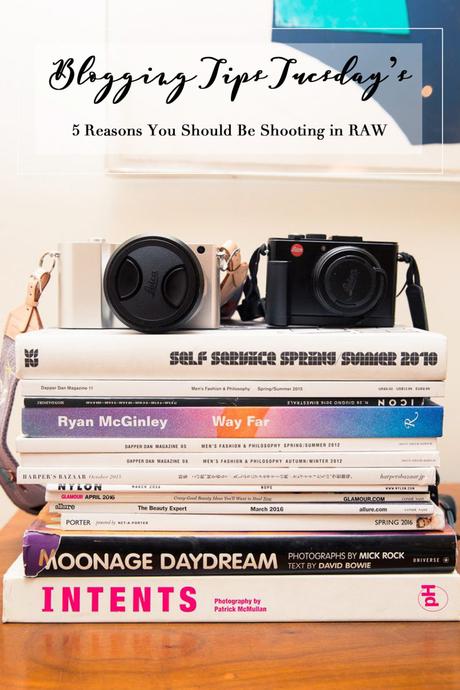
Hi guys! I’m super excited to add this new little column about blogging tips into the rotation here. I’ve gone ahead and adding a Blogging Tips tab to the header of the site to make it easy to go back and refer to each post in the series if you need or want to. So let’s jump right into it shall we? This week’s Blogging Tips Tuesday post is all about why you should be taking your blog photos in RAW – if you aren’t already!
First off, what is RAW?
The first question you may be asking is what exactly is RAW photography? Simply put, RAW is a type of camera image that has yet to be processed. Before making the switch to shooting in RAW, most cameras will shoot a JPEG image. JPEG images are processed within the camera, while RAW images require post processing in a processor equipped to edit RAW images such as Lightroom.
The difference in how RAW vs. JPEG images are processed is super important for a couple of reasons. One being when shooting JPEG images, your camera will automatically decide how to process the image. It’ll do everything from adjust the contrast and brightness, to sharpening the image in this mode. And super important – these are final adjustments and you can’t go back and perfect any JPEG image after it’s originally shot.
However, when shooting in RAW, you can edit the original image and adjust items such as the white balance, brightness, sharpness, contrast, etc. afterwards. Which brings me to the very first reason you should be shooting in RAW – your ability to get that ‘just right’ photo during post processing.
1. RAW Vastly Improves Your Editing
Like I mentioned above, RAW camera images are ones which haven’t been processed yet, and require some type of image processor to edit the images. The great thing about this is that it gives you so much more control and flexibility when editing your photos. Adjustments to items like the white balance, temperature, brightness and sharpness allow you to take what would otherwise possibly be an underexposed or blown out photo, and correct it without destroying the image.
2. Shooting In RAW Is Forgiving
We’ve all had those moments where you think you got the perfect shot, but something goes wrong and totally messes it up. A wayward cloud may appear and cause your shot to be underexposed, your hand may shake a bit when pressing the shutter button and cause some blur, you may be shooting something indoors and the photos come out super yellow toned – I could go on and on, but the point here is that when you shoot in RAW a lot of these little mistakes that could mess up an other wise perfect shot can be easily corrected. You just don’t have that flexibility with editing JPEG files.
3. RAW Files Allow For Non Destructive Editing
The image quality of RAW photos will never be damaged by edits. Basically, you can edit the same photos over and over again and always be able to go back and make adjustments, or even start editing the same photo all over again from scratch. Even after the photo is saved and exported from your editing processor of choice. This is life changing for so many reasons. I can’t tell you how many times I’ve edited a set of photos and think they’re perfect, but when I preview them in a blog post decide they could use a bit more tweaking. It’s so easy for me to just simply go back to the pictures in question in Lightroom, and make a few additional edits. Unfortunately, when editing JPEG files, they lose quality each and every single time they’re edited and saved. And to top it off, once that JPEG image is edited and saved, there’s absolutely no going back to the original for any reason, unless you make a copy each and every time you make edits. It’s kinda scary and a total bummer, right?
4. Adjusting White Balance And Exposure Is Super Simple
Because RAW images store way more data than JPEG’s, they can be edited to allow for more adjustments to a photo without damaging the image quality. This means you can easily adjust the white balance, take out the yellow tones in a photo, or correct an over or underexposed image with the click of a mouse in about 5 seconds. Yep, it’s that easy.
5. Tack Sharp Images
The sharpening tools and alogrithims that are found in RAW processing tools like Lightroom, are super advanced and powerful. Unlike a JPEG, your camera doesn’t automatically perform image sharpening on the RAW photos that it takes, which allows you the freedom to adjust the sharpness and noise in your photos via the tools in Lightroom, vs. relying on your camera to automatically decide on the sharpness of your photos. I’d like to think we’re all just a bit smarter than our cameras right?
Hopefully this helps a bit if you’re deciding whether to switch over to shooting in RAW, or if you simply were curious about knowing more about it. Let me know if there’s any other topics you guys would like me to cover in future Blogging Tips posts, and I’ll do my best to make it happen!
Image for graphic via The Coveteur.

